Swiss school offers hope in Sichuan
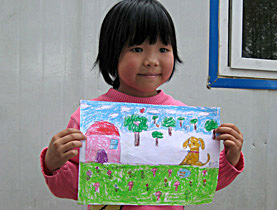
One year after an earthquake killed at least 87,000 people in Sichuan, China, Swiss workers are about to build a kindergarten in a village devastated by the tragedy.
It is a glimmer of light in a region plagued by censorship, state secrets and denials that has left many survivors in the dark on the fate of their loved ones.
“We can and we must remind [Chinese authorities] that in our view they have an obligation to provide information in regard to victims and their families,” said Blaise Godet, Swiss ambassador to China, speaking shortly before the anniversary of the May 12 earthquake.
Censorship of the press, journalists expelled, lists of victims not made public, the collapse of thousands of schools kept quiet, the parents of victims forbidden from meeting each other, little to no compensation, threats and gag orders…
The image of transparency and openness that China worked to portray during the Olympic Games in Beijing last year has vanished. In its place an iron curtain has been drawn once again.
Good image
In the days after the earthquake, the tragedy served to turn attention away from troubles in Tibet and to portray a positive image on the eve of the Olympics.
One year later there is no longer a need to charm the world and local leaders are looking for ways to preserve their interests.
Switzerland, given this atmosphere, wants to have its voice heard.
“Transparency is very important to us and we bring it up regularly, particularly in the context of human rights talks that we’ve been holding with China since 1991,” Godet said.
But above all Switzerland offers its services to come to the aid of victims of the catastrophe.
On April 13 Stephan Titze and Felix Sutter set out for Long Xing, a small village in the Chong Zhou district, 30km northwest of Chendu, the provincial capital of Sichuan.
On behalf of the Swiss-Chinese Chamber of Commerce (SwissCham), the two Swiss preside over a project to rebuild a nursery school that can hold 400 children. A little more than SFr1 million ($910,000) paid by the Swiss-Chinese community, businesses and private donors among others.
Drawings
The first stone was set to be laid in February, but the date was pushed back to April 13. It has now been set for May 20, but the school could still open before the end of the year.
Overseeing the final details is why the two Swiss responsible for the project made the trip, flanked by two journalists and a photographer, Petri de Pita, who is interested in the children’s vision of the future.
De Pita asked the students to draw him pictures of the future, which he plans to use for a calendar along with drawings from Swiss children.
Handshakes, bows and greetings: the officials welcome the Swiss in the ruins of the old Long Xing school destroyed in the quake. No one was killed when it collapsed. The children are well behaved if not intimidated by the group of adults. Everyone crams into a makeshift pavilion.
It is difficult to know whether they really appreciate the gifts of pencils and red baseball caps emblazoned with white crosses. They seem a bit tense during the photo sessions, with each gesture and word being watched, as if someone suggested what they should draw.
The right to question
“I have the impression that the positive things that have been done are being shown and not what remains to be done,” said de Pita, taken aback by the children’s extreme shyness. The journalists have to insist on the right to ask the children a few innocent questions.
At a meeting with the deputy mayor of Chong Zhou, there is palpable tension when a reporter asks why Sichuan authorities doggedly refuse to make a list of victims public. The following day a long wine-and-dine session for the Swiss journalists and photographer seems to be more of a way to hinder interviews than a true gesture of friendship.
In Beijing Ai Weiwei, a leading Chinese architect who was involved in building the Olympic “bird’s nest” stadium, denounces local government lies. He recruits hundreds of volunteers to travel around Sichuan and compile a list of dead children which he publishes on his blog. He acknowledges that challenging authority makes him afraid.
“But I believe that it is a duty to research the truth,” he said. “Look at these thousands of school children. They were innocent and now they are dead. It is a sure sign that to not ask questions does not guarantee security. I believe that the whole country is in danger if we don’t ask good questions.”
Alain Arnaud in Beijing, swissinfo.ch
At 2:20pm local time on Monday, May 12, 2008, an earthquake hit about 80km west of Chengdu, the provincial capital of Sichuan, China.
Seismologists say the quake hit 7.9 on the Richter scale. The epicentre was approximately 10km below the earth’s surface.
The quake was largely felt across China and all the way to Thailand and Taiwan.
Swiss authorities have contributed upwards of SFr1.5 million ($1.36 million) in humanitarian aid and emergency relief in support of the communities hit by the quake.
The Swiss Agency for Development and Cooperation (SDC) has also contributed to the construction of a nursery school with SFr50,000.
The SDC launched in 2002 a programme in China that helped train 20 instructors in search and rescue techniques.
A social activist group, Entraide Protestante, has also pledged SFr300,000 for Sichuan relief.
Bird’s Nest: The celebrity status of Ai Weiwei, 52, one of China’s most well known artists and designers, has given him the freedom to openly criticise the Chinese government. He was a conceptual designer in the Olympic National Stadium, known as the Bird’s Nest, along with Swiss architects Herzog and de Meuron.
The dead: On his blog, Ai swapped hats to be a statistician. With the help of hundreds of volunteers and recruits, Ai worked to collect the names of the people killed in the quake.
Resistance: Almost constantly censored by the Chinese regime, Ai does not let up. He has worked to shed new light on the tragedy and his determination possibly led to the Sichuan government’s decision to publish the number of students killed – 5,335. “A number that has nothing to do with reality,” Ai said.
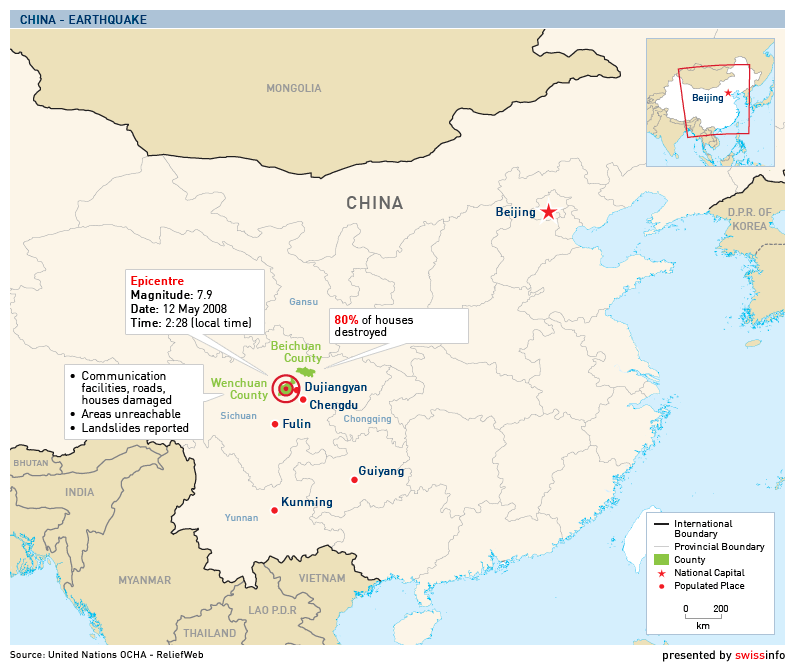

In compliance with the JTI standards
More: SWI swissinfo.ch certified by the Journalism Trust Initiative
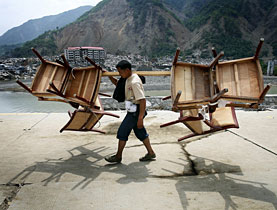
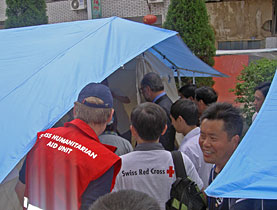
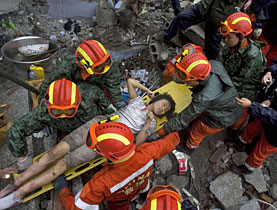
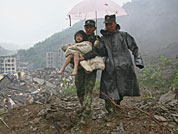
You can find an overview of ongoing debates with our journalists here. Please join us!
If you want to start a conversation about a topic raised in this article or want to report factual errors, email us at english@swissinfo.ch.